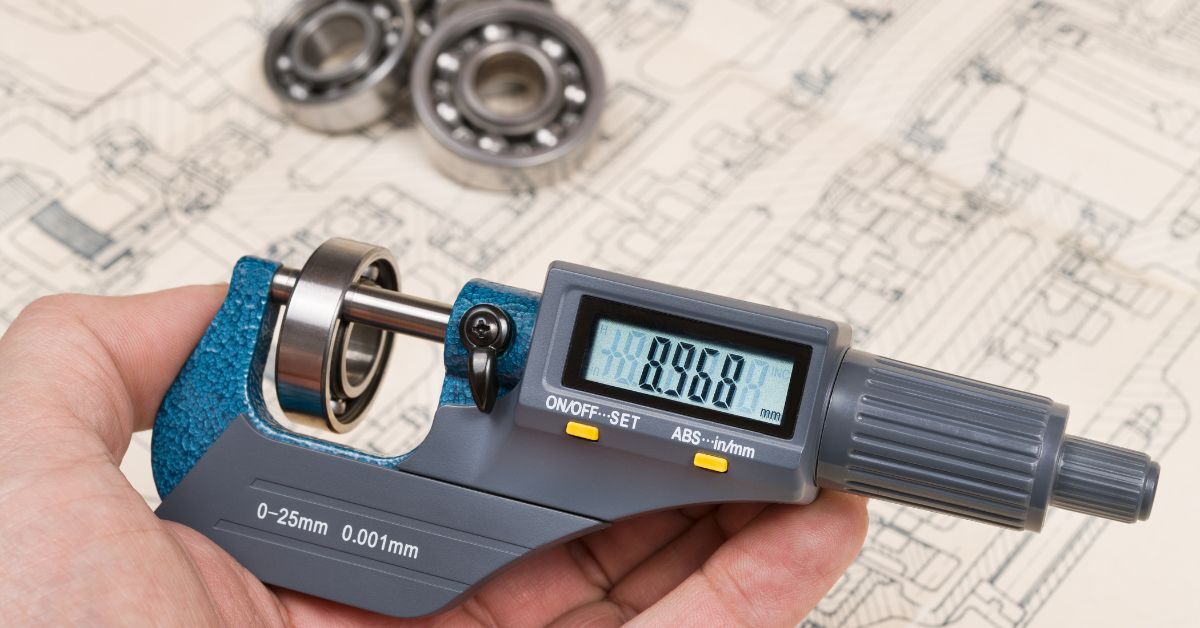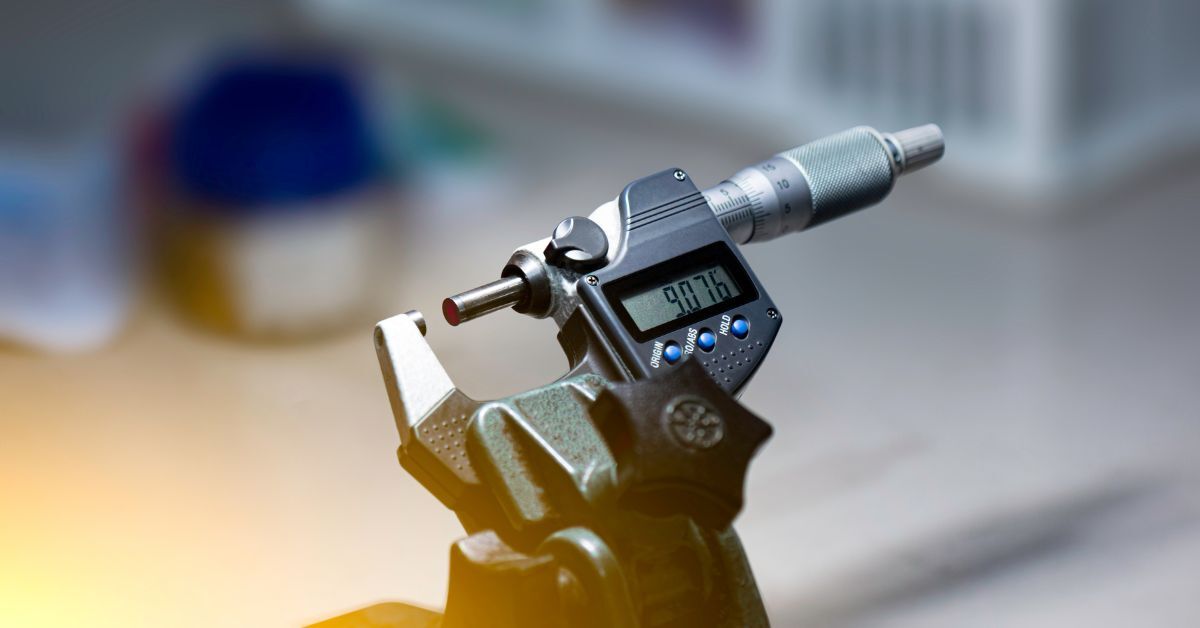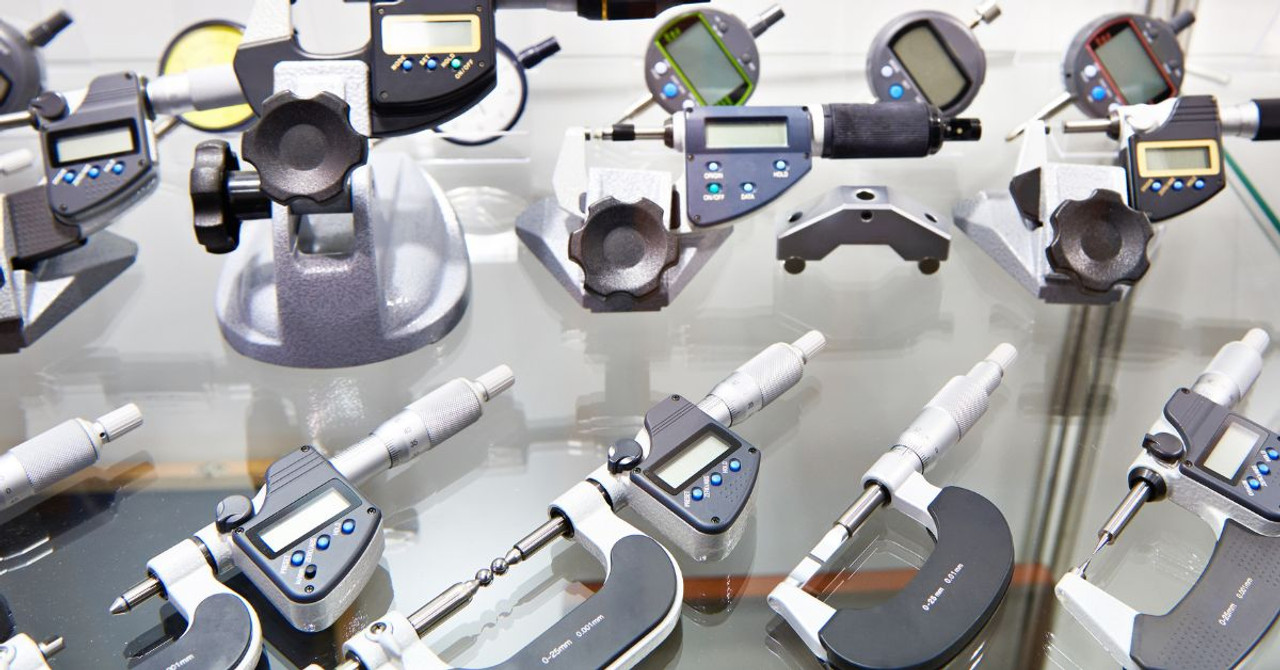Using quality tools can make all the difference when taking precise measurements. A digital micrometer takes accurate measurements of distance at a small scale, making it indispensable in manufacturing, engineering, and woodworking.
Choosing from a large selection of digital micrometers can be daunting for someone new to precision measurement devices. The good news is understanding the features and functions of digital micrometers can simplify the process. This guide on how to choose the right digital micrometer will help you discover the perfect option for your needs, whether you’re measuring small machine components or testing materials.
What Is a Digital Micrometer?
A digital micrometer measures extremely small distances, dimensions, or thicknesses with incredible accuracy. Advanced technology provides measurements displayed on an electronic digital screen, eliminating the need for manually reading scales and reducing errors.
A digital micrometer is essential for precision in engineering, manufacturing, machining, and scientific research. Mechanical micrometers require the user to interpret measurements, but digital micrometers simplify the process with their user-friendly digital readouts.
Determine Your Measurement Needs
Choosing the right digital micrometer for your application begins with clearly understanding your measurement requirements. Consider the type of objects and dimensions you’ll be working with; are you measuring the external diameters of cylindrical pieces, the thickness of sheets, or the depths of drilled holes?
Each application may require a different type of micrometer, such as an external micrometer for outer dimensions, an inside micrometer for measuring internal diameters, or a depth micrometer for evaluating depth. Consider the precision required for your tasks, as some micrometers provide higher resolution and accuracy than others.
Explore the Types of Digital Micrometers
Digital micrometers are easy to use and provide instant digital readings. The following digital versions could be ideal for your applications.
Digital Outside Micrometers
These devices measure the external dimensions of shafts, blocks, or rods. They offer precision with digital readouts, making the process efficient and error-free.
Digital Inside Micrometers
Designed for measuring the internal dimensions of hollow spaces, such as cylindrical holes or bores, digital inside micrometers have accurate electronic displays, delivering reliable results when there’s no room for error.
Digital Depth Micrometers
Ideal for determining the depth of slots, recesses, or holes, these micrometers come with an easy-to-read LCD screen.
Digital Tube Micrometers
Digital tube micrometers measure the thickness of the walls of tubes or pipes. These micrometers have specialized spindle tips and digital interfaces, which are great for examining delicate or curved surfaces.
Digital Blade Micrometers
These devices have thin, flat tips to measure narrow grooves or keyways. The digital display enhances their usability in high-precision tasks.
Check the Measurement Range

When selecting a digital micrometer, evaluate its measurement range, as it defines the maximum and minimum dimensions the tool can measure. Standard micrometers typically range from 0–1 inch (25 mm), which suffices for general applications.
For tasks requiring precise measurements of larger or smaller dimensions than the general range, you might need a micrometer with extended or specialized ranges. By understanding the measurement needs of your project, you can strike a balance between usability and functionality.
Look at the Resolution and Accuracy
When selecting a digital micrometer, consider resolution and accuracy. Resolution defines the smallest unit the device can measure, typically expressed as 0.0001 inches (or 0.001 mm) for most high-quality models. This fine resolution allows for precise measurements of intricate or delicate components.
Accuracy reflects the device’s capability to provide measurements that closely match the actual values. An accurate micrometer gives reliable readings and minimizes errors that could lead to manufacturing defects or assembly issues.
Evaluate the Build Quality
You should also be looking at the build quality because it directly affects the tool’s performance and longevity. Invest in a device made from durable, high-quality materials, such as stainless steel or carbide-tipped anvils, because it can resist wear and corrosion.
Mitutoyo is a popular micrometer brand due to its exceptional craftsmanship. Professionals in many industries trust these high-performance tools. With a quality Mitutoyo micrometer, you can get reliable measurements time after time.
Examine the Digital Display

Digital micrometers have easy-to-read digital screens, which enhance usability during measurement tasks. When selecting a micrometer, prioritize a model with a clear, high-contrast display that is easy to read, even in dim lighting.
Many advanced models feature additional functionalities on their displays, such as the ability to toggle between imperial and metric units, incremental reading options for finer adjustments, and error indicators. These features improve the accuracy and efficiency of the tool and minimize the chances of misinterpretation or mistakes.
Consider Ergonomics and Ease of Use
Ergonomics and ease of use play a crucial role in the selection of digital micrometers, particularly for beginners or people using the tool for extended periods. An ergonomic design enhances user comfort and minimizes strain, so look for a contoured grip and intuitive controls.
A ratchet stop or a friction thimble help to regulate the applied force, giving you consistent and precise measurements every time. By prioritizing these details, you’ll get accurate measurements from your device.
Choose a Micrometer With SPC Data Output
Digital micrometers are available with and without statistical process control (SPC) data output. By choosing a micrometer with SPC data output, you can manage data, monitor your workflows, and improve quality control. Advanced Systems and Designs offers single-gage interfaces that easily send data to Microsoft Excel or any other SPC data collection program. These single-gage interfaces help to eliminate data collection errors, allowing you to operate with confidence.
Compare Pricing and Reviews
When selecting a digital micrometer, weigh pricing against the features to find a model that aligns with your needs and budget. In addition, read customer reviews and ratings to gather real-world insights into the product’s quality, durability, and ease of use.
Reviews can help you identify potential issues, such as calibration challenges or weaknesses in build quality, and make sure the product meets your expectations. By comparing various options and understanding how each one performs through user experiences, you can select a digital micrometer that offers the best balance of cost, performance, and reliability.
Choosing the right digital micrometer shouldn’t be overwhelming, even if you’re new to using precision tools. You can find a tool that meets your requirements by understanding your measurement needs, exploring the different types, and considering features such as resolution and build quality. Whether you are working in a professional setting or pursuing a personal project, a reliable digital micrometer will make all the difference in taking accurate measurements.

